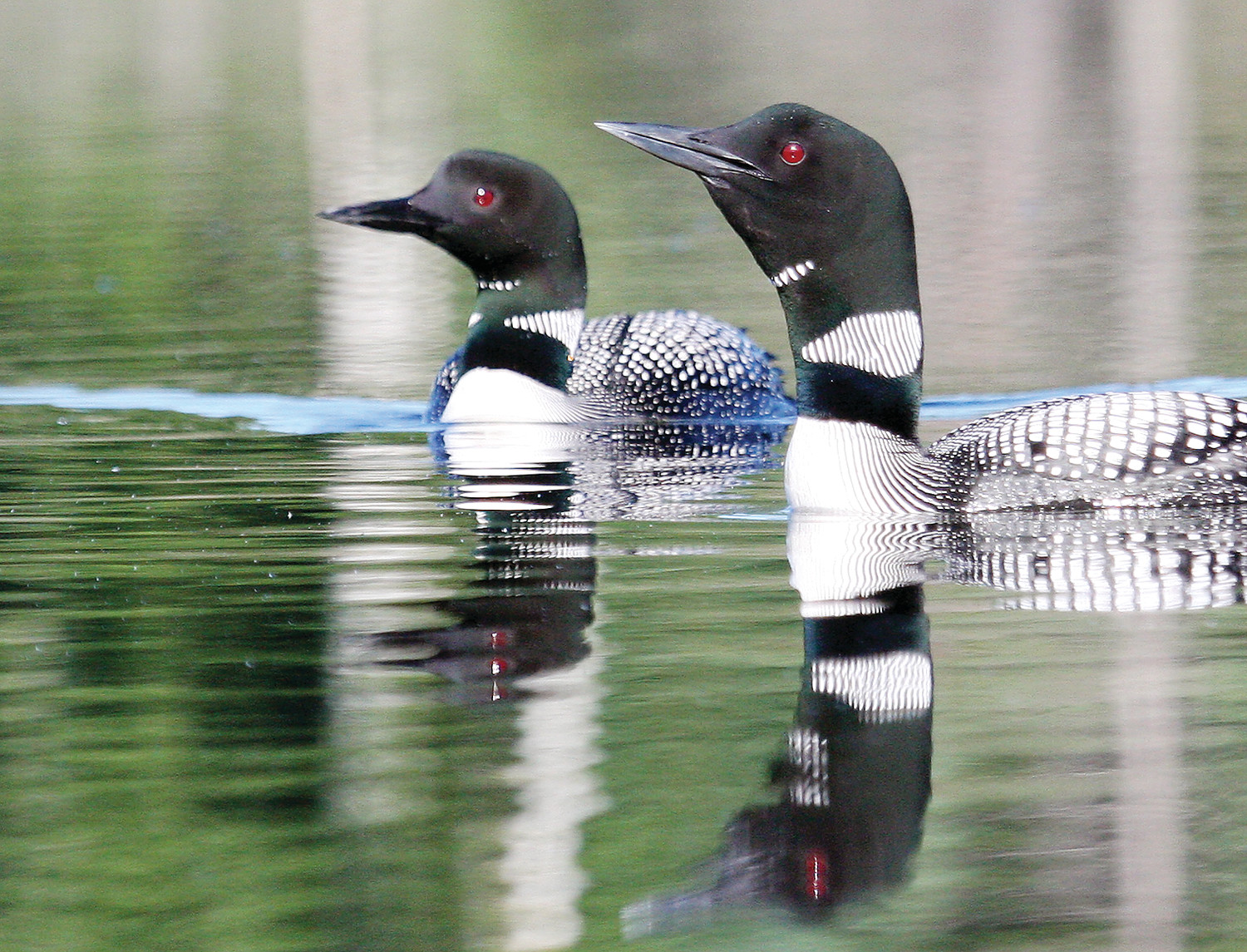Support the Timberjay by making a donation.
Loon count shows increase
Long-term loon monitoring is helping researchers better understand threats to the species
LAKE VERMILION— Common loons continue to do well on Lake Vermilion, according to the results of the 2018 loon count— and that suggests that the 2010 BP oil spill in the Gulf of Mexico may not …
This item is available in full to subscribers.
Attention subscribers
To continue reading, you will need to either log in to your subscriber account, or purchase a new subscription.
If you are a current print subscriber, you can set up a free website account and connect your subscription to it by clicking here.
If you are a digital subscriber with an active, online-only subscription then you already have an account here. Just reset your password if you've not yet logged in to your account on this new site.
Otherwise, click here to view your options for subscribing.
Please log in to continue |
Loon count shows increase
Long-term loon monitoring is helping researchers better understand threats to the species
LAKE VERMILION— Common loons continue to do well on Lake Vermilion, according to the results of the 2018 loon count— and that suggests that the 2010 BP oil spill in the Gulf of Mexico may not have affected loon reproduction— at least not yet.
Volunteers from the Vermilion Lake Association conducted the annual count on July 9, and tallied 235 loons, including 197 adults and 38 chicks, which is above the long-term average of 31 chicks.
A total of 143 of the sighted loons were found on the lake’s east end, with the remaining 92 loons found in the lake’s western basin.
Those numbers represent an increase over last year’s tally of 173 adults and 29 chicks, and are more in line with recent years, when the tally has averaged about 250 loons.
Minnesota is home to more common loons than all other states in the U.S. combined, except Alaska. And as the state bird, interest has long been high in this iconic resident of the state. In the wake of the 2010 oil spill, researchers have been closely watching loon numbers for signs that the incident on the Gulf could be impacting loon numbers and reproduction. Previous research has demonstrated that loons in Minnesota and Michigan were exposed to the 2010 spill, but it remains uncertain how quickly any effects from that exposure might show up in population trends and reproductive success.
“We’re still waiting to see what kind of results that could have,” said Gaea Crozier, a DNR nongame specialist in Grand Rapids who works on loon monitoring programs. “That’s why these long-term monitoring projects are so helpful,” said Crozier, noting that they provide good baseline data for detecting changes in populations and reproduction. The Lake Vermilion count is one of the longest-running loon counts in Minnesota, having just completed its 35th year without interruption, and that makes it particularly valuable for researchers watching the long-term health of the state’s loon population.
While Lake Vermilion is home to a very large number of loons, not all appear to be breeders and that’s one reason that reproductive success can appear limited on the lake. It can take 3-4 years of returning to a summer range before an adult loon settles on an available territory and during that period the loons are simply non-breeding adults. In some cases, if territories are not readily available, an adult male without a territory may attempt to take one from a rival male. Such attempts are typically violent and result in the death of one of the rival males in about a third of the cases.
Ongoing research in northcentral and northeastern Minnesota shows that Itasca County has the highest density of loons in the region, and also has the highest breeding success, with a reproduction success ratio of 0.63 chicks per adult pair. The county has a large number of small lakes, often with clear water, which are ideal for loons.
Research in Cook and Lake counties, by contrast, shows long-term breeding success of about 0.45 chicks per adult pair, among the lowest in the region. It’s uncertain why there’s such a difference, but Crozier notes that loon reproduction could be lower there because lakes on the Canadian Shield are generally less productive for fish than lakes in other parts of Minnesota. “So there’s probably less of a prey base,” she said.






